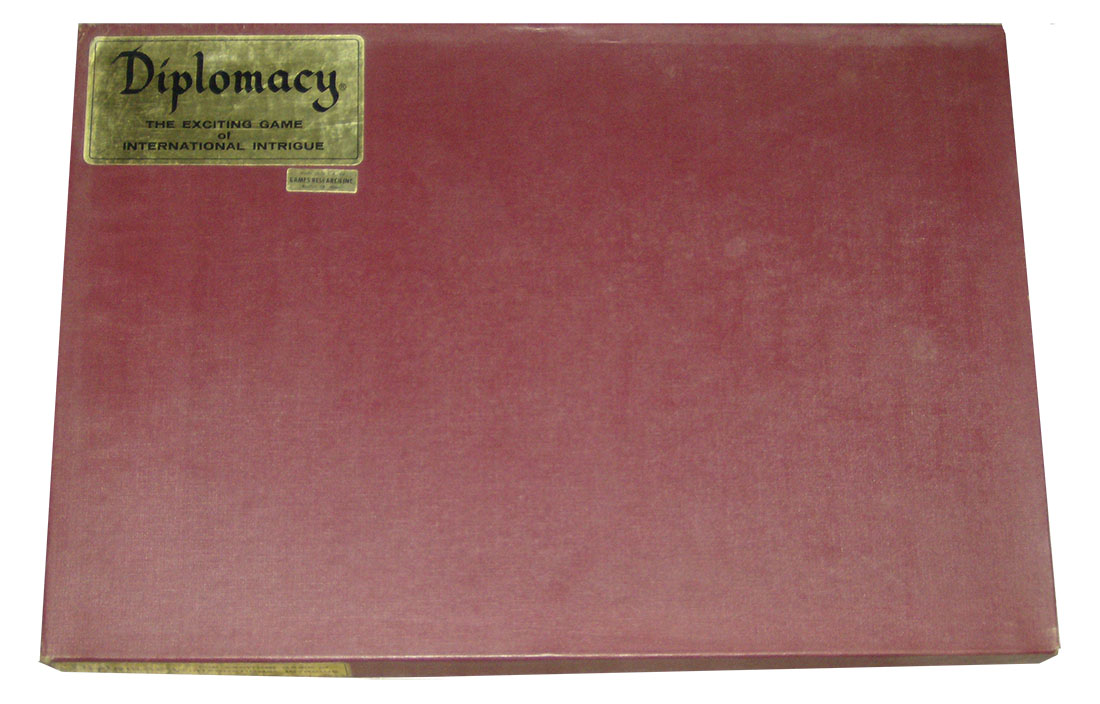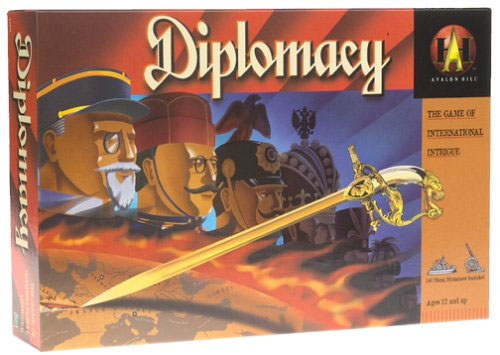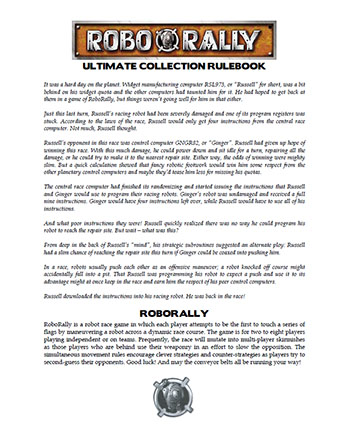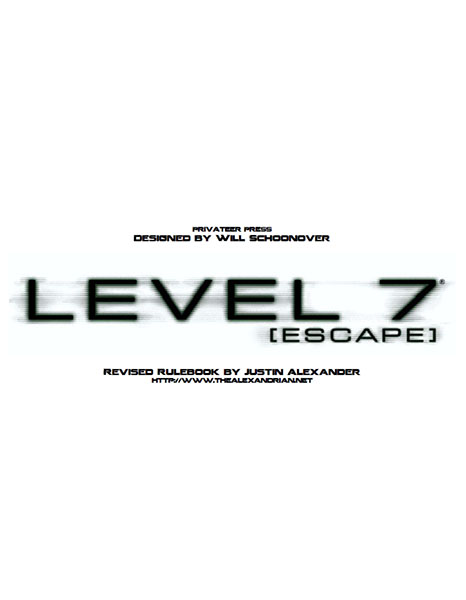Back in 2000-2001 I developed what I can comfortably described as an obsession with Diplomacy. Much of what you’ll read below was written in April 2001 and, if my younger self did his job (which I believe he did), should fully explain why — following my in-depth study of the game — I came to the conclusion that a revised rulebook for the game was necessary. Although these rules received a limited dissemination during the spring and summer of 2001, this is the first time they’ve been made widely and commonly available. (If you’d prefer to cut to the chase, click here to download the PDF.)
In the words of The Diplomacy Player’s Technical Guide: “Diplomacy merits such a body of game laws as chess has: One that is clean, clear, consistent, comprehensible, conventional, concrete, concise, complete, discrete, finite, playable, unambiguous, standard, traditional, elegant, firm, precise, and logically whole.”
The Alexander Rules are designed to provide such a set of rules.
It is an unfortunate reality that the rules of Diplomacy – as published by Allan B. Calhamer, Games Research, Avalon Hill, and Hasbro – have always contained ambiguities and inconsistencies: Situations in which a “correct and consistent” adjudication by the rules (i.e., an adjudication which will be identical from one Gamemaster or Judge to the next) is impossible.
HISTORY OF THE DIPLOMACY RULES
For the casual student, the extant rules for Diplomacy (as published in America) are:
D1959
GR1961
GR1971
AH1976
AH1982
AH1992
H1999
H1999 (computer)
H2000
WOTC2008
The D1959 rules are the original rules as published by Allan B. Calhamer. When Games Research, Inc. acquired the rights to the game in 1961 they published their own rulebook (GR1961) – which was, in all ways, identical to the 1959 rulebook except for typographical design and lay-out.
The rules were first revised by Games Research, Inc. ten years later. A team consisting of Rod Walker, Steve Marion, John McCallum, John Boardman, and others was commissioned to work with Allan Calhamer. The result was the GR1971 rulebook. This rulebook reorganized the entire rule set, introducing the idea of numbering and naming each rule individually. The rulebook clarified a number of concepts and introduced rule XII.5: A Convoyed Attack Does Not Protect the Convoying Fleets. This rule was an attempt to resolve first order paradoxes (see below).
 When Avalon Hill acquired Diplomacy in 1976, they published their own rulebook (AH1976). This rulebook was identical to the GR1971 rulebook, but bore a new copyright date.
When Avalon Hill acquired Diplomacy in 1976, they published their own rulebook (AH1976). This rulebook was identical to the GR1971 rulebook, but bore a new copyright date.
Six years later, in 1982, Avalon Hill released a revised ruleset. Known as the 1982 or “2nd Edition” rulebook (despite the fact it was really the third edition of the published game), this rulebook (AH1982) again offered revisions in an attempt to create a more consistent ruleset. Notably, rule XII.5 was changed to: A Convoyed Attack Does Not Cut Certain Supports (this rule was an attempt to resolve second order paradoxes) and rule XII.6: Both a Convoy and an Overland Route was added (this rule was an attempt to stop the “kidnapped army” ambiguity).
Avalon Hill revised the rulebook a second time in 1992, resulting in the AH1992 (3rd Edition) rulebook. These rules were, essentially, identical to the AH1982 rulebook, but there were editorial changes designed to clarify the distinction between a Move order, a Support order, and a Convoy order. These editorial changes resulted in an alteration in the numbering and naming of the rules – meaning that referring to a rule by the numerical scheme was no longer practical unless you specified the rulebook you were referring to. (As a result, most players in the Diplomacy community continue to use the 1982 references and ignored the 1992 rulebook.)
Avalon Hill was sold to Hasbro in the late 1990’s. Under Hasbro’s ownership, a new edition of Diplomacy was released in 1999 with a completely revised rulebook (H1999). This rulebook, also known as the 4th Edition, was aimed firmly at the neophyte, illustrated with copious examples and explanative text. Unfortunately, in an effort to make the rules accessible to a family audience, the H1999 rulebook sacrificed precision, ease of use, and consistency: The numerical ordering of the rules was abandoned, the rules were badly broken up by the examples without clear reference, and the second and (under some interpretations) first order paradoxes were reintroduced to the ruleset. On the other hand, the H1999 rules did include the first clear resolution of the “kidnapped army” ambiguity.
 At the same time that Hasbro released its revised edition of Diplomacy, it also released a CD-ROM version of the game. The CD-ROM game shipped with its own rulebook (referred to as the H1999 computer rulebook), which differed from the H1999 rulebook in only one regard: It did not include a clear resolution of the “kidnapped army” ambiguity, and – in fact – took a step backward here, as well, to the 1976 rules.
At the same time that Hasbro released its revised edition of Diplomacy, it also released a CD-ROM version of the game. The CD-ROM game shipped with its own rulebook (referred to as the H1999 computer rulebook), which differed from the H1999 rulebook in only one regard: It did not include a clear resolution of the “kidnapped army” ambiguity, and – in fact – took a step backward here, as well, to the 1976 rules.
Hasbro has also released a H2000 rulebook, differentiated from the H1999 rulebook only by the copyright date. A third version of this rulebook, published by wizards of the coast, was released in 2008 with no significant changes (although the name of the Build Phase had been changed to the “Gaining and Losing Units Phase”).
So, in general, it is safe to say that there have been five versions of the rulebook:
D1959/GR1961 (Original Edition)
GR1971/AH1976 (1st Edition)
AH1982 (2nd Edition)
AH1992 (3rd Edition)
H1999/H2000/WOTC2008 (4th Edition)
With a minor variation of the 4th Edition for the CD-ROM edition of the game.
AMBIGUITIES
Ambiguities are situations in which the rules are unclear. There are two possible outcomes of adjudication, but the discrepancy is caused because the meaning of the rules is unclear. If the meaning of the rules were clear, then no discrepancy would exist.
THE COASTAL CRAWL: In the original edition of the game, the definition of a “space” was not as clearly defined as it is today. As a result, one interpretation of the rules postulated that, for example, the north coast and the south coast were two separate provinces, allowing:
F Por-Spa (nc)
F Spa (sc)-Por
Calhamer explicitly did not desire that this move – known as the “coastal crawl” – should be legal. As a result, the 1971 revision of the rules clarified the definition of spaces and disallowed the coastal crawl.
MULTIPLE CONVOY ROUTES: Under the original rules it was entirely unclear how multiple, legitimate convoy routes should be handled. For example:
A Tun-Nap
F Ion C A Tun-Nap
F Tyn C A Tun-Nap
Should such an order be disallowed because it “admits of two meanings”? If it is allowed, should the army be allowed to move to Tunis if one (but not both) convoys are disrupted? In the 1971 revision, rule XII.4 (Ambiguous Convoy Routes) allowed the orders, but stated that “if any of the possible routes are destroyed by dislodgment of a fleet, the army may not move”.
This, however, created new problems. Now all a foreign power needed to do to prevent a convoy was to order an alternate convoy and then arrange for its own fleet to be dislodged. So the 2nd Edition reversed course, replacing rule XII.4 with “More Than One Convoy Route: If the orders as written permit more than one route by which the convoyed army could proceed from its source to its destination, the order is not void on account of this ambiguity; and the army is not prevented from moving due to dislodgment of fleets, unless all routes are disrupted.”
KIDNAPPED ARMY: Another problem with convoys were “kidnapped armies”. Here an army in a coastal province is attempting to move into an empty, adjacent coastal province. A foreign power slyly orders a convoy for the unit, and then arranges for the convoy to be disrupted. Now, it seemed, the army no longer moved – because their convoy had been disrupted (rule XII.3).
The 2nd Edition rulebook attempted to correct this problem with rule XII.6: “Both a Convoy Route and an Overland Route: If an army could arrive at its destination either overland or by convoy, one route must be considered and the other disregarded, depending upon the intent as shown by the totality of the orders written by the player governing the army.”
The problem is that rule XII.6 amounted to absolutely nothing. What does “shown by the totality of the orders written by the player governing the army” mean, exactly?
This problem remained uncorrected until the 4th Edition of the rules, where an unnumbered rule reads: “If at least one of the convoying Fleets belongs to the player who controls the Army, then the convoy is used. The land route is disregarded. If none of the convoying Fleets belong to the player who controls the army, then the land route is used. However, the player controlling the army can use the convoy route if he/she indicated ‘via convoy’ on the Army move order in question.” (pg. 15)
This, however, is the rule which was dropped for the H1999 computer version of the manual, because the CD-ROM game offered no mechanic by which “via convoy” could be indicated. The H1999 computer version of the manual states that “if either the overland route or the convoy route is valid, then the Army will move to its destination”.
Note that both of these rules resolves the ambiguity in a different fashion.
BRANNAN’S RULE: Brannan’s Rule was an early house rule which attempted to solve first order paradoxes (see below). It was named after Steve Cartier (aka Dan Brannan), and stated: “The army in a convoyed attack is deemed to come from the space occupied by the last convoying fleet.” The primary intended effect of this rule was to make it impossible for a convoyed attack to cut a support directed against a convoying fleet.
However, Brannan’s Rule has a couple of undesirable side-effects: If the army is coming from the space occupied by the last convoying fleet, then the army is occupying that space at the same time as the fleet (something which the rules expressly forbid at all times).
Allan Calhamer disagreed with Brannan’s Rule, and in the 1971 revision an alternate solution was found to first order paradoxes (which specifically prevented the convoy from cutting a support against itself).
The rules, however, have never clearly stated that a convoyed attack comes from the army’s original province – which means that the ambiguity of the issue crops up from time to time.
PARADOXES
Unlike ambiguities, the problem of paradoxes cannot be resolved by clarifying the rules. In most cases, the rules are crystal clear: The problem of the paradoxical situation is that it admits itself to two different resolutions under the rules. In order to correct a paradox, the rules must be changed or amended.
FIRST ORDER PARADOXES: The simplest of the paradoxes involves a convoyed attack cutting the support of an attack which would, otherwise, disrupt the convoy:
England: F Lon S F Wal-ENG
England: F Wal-ENG
France: A Bre-ENG-Lon
France: F ENG C A Bre-Lon
Under the original rules of the game, this situation could not be adjudicated: If the convoy succeeds, then the support is cut and the convoy succeeds. If the support is not cut, then the convoy fails and the support is not cut.
In the AH1976 rules, this was corrected with rule XII.5: “A Convoyed Attack Does Not Protect the Convoying Fleets: If a convoyed army attacks a fleet which is supporting a fleet which is attacking one of the convoying fleets, the support is not cut.”
Now the adjudication is clear: The support of F Lon is not cut and the attack on ENG by F Wal succeeds, dislodging F Bre and disrupting the convoy.
SECOND ORDER PARADOXES: But that didn’t solve all the problems:
France: A Bre-ENG-Lon
France: F ENG C A Bre-Lon
England: F Lon S F Edi-NTH
England: F Edi-NTH
Russia: A Nwy-NTH-Bel
Russia: F NTH C A Nwy-Bel
Germany: F Bel S F Pic-ENG
Germany: F Pic-ENG
Do both convoys succeed or are both convoys disrupted because both convoys succeed?
Another revision of the rules was in order, and in AH1982 it was provided with a rewrite of rule XII.5: “A Convoyed Attack Does Not Cut Certain Supports: If a convoyed army attacks a fleet which is supporting an action in a body of water; and that body of water contains a convoying fleet, that support is not cut.”
Unfortunately, this new rule had side effects – altering adjudications in situations where there had been no problem. And, worse yet, the result could almost certainly be described as wholly illogical in those actions:
England: F IRI-MAT
England: F ENG S F IRI-MAT
France: F Spa (nc) S F MAT
France: F MAT C A Por-Bre
France: F Por-MAT-Bre
Italy: F GOL C A Tus-Spa
Italy: A Tus-GOL-Spa
Under the 1976 rules, Italy’s attack on Spain would cut the support and result in the disruption of the convoy through the Mid-Atlantic. Under the 1982 rules, Italy’s attack on Spain has no effect at all. Worse yet, if you add:
Italy: A Mar S A Tus-GOL-Spa
France’s fleet in Spain is actually dislodged, but still offers support under the 1982 rules.
PANDIN’S PARADOX: Plus, the 1982 rule didn’t resolve all the paradoxes. Pandin’s Paradox results from orders like these:
France: A Bre-ENG-Lon
France: F ENG C A Bre-Lon
England: F Lon S F Wal-ENG
England: F Wal-ENG
Germany: F NTH S F Bel-ENG
Germany: F Bel-ENG
Ignoring the effects of the convoy, the attacks on the English Channel from England and Germany are equally supported – which means that France’s fleet in the English Channel would not be dislodged due to the beleaguered garrison rule. But now take the effects of the convoy into account: If the convoy succeeds, then it cuts London’s support, which means that England’s and Germany’s attack on the channel are no longer equally supported, which means that the fleet is dislodged, which means that the convoy is disrupted. Paradox.
DESIGN PRINCIPLES OF THE ALEXANDER RULES
The Alexander rules are designed to be:
Clear: The meaning of a rule is never vague or uncertain, and admits of only one interpretation. Ambiguities do not exist in the rules.
Robust: The rules are consistent and logical, allowing for only a single resolution to be possible for any given set of orders. Paradoxes do not exist under the rules.
Precise: Rules can be cited accurately and quickly. The rules have been structured to group concepts into clear hierarchies and are numbered to provide easy reference (under a numbering system which is distinct from previous numbering systems so as to minimize confusion). Terms within the rules are given specific definition.
Clean: When notes and comments are included, they are clearly separated from the rules themselves. (Notes are identified as such and contained within parentheses. These notes comment upon the rules, but are not part of the rule set.)
Elegant: The rules seek to provide the simplest means to any end. Unnecessary rules are avoided. Duplication of rules is avoided whenever possible.
Traditional: The Alexander Rules do not represent an alteration of Diplomacy, except in those circumstances when it is required to correct a paradox.
Complete: The Alexander Rules contain all the rules necessary to play Diplomacy.
Specifically, here are ways in which the ambiguities and paradoxes mentioned above have been resolved in the Alexander Rules:
Coastal Crawl: As per the most recent edition of the rules (following the GR1971 revision), the definition of a “province” in the Alexander Rules is precise and the coastal crawl is not allowed.
Multiple Convoy Routes: As per the most recent edition of the rules (following the AH1982 revision), multiple convoy routes are allowed and the convoy is not disrupted unless all routes are disrupted.
Kidnapped Armies: The Alexander Rules use a simpler standard than the most recent edition of the rules. If an Army could reach its destination via either a land route or a convoy route, it is assumed to move via the land route unless it is specifically ordered to move “via convoy”. Furthermore, an Army ordered to move via convoy that has all of its convoys disrupted will still attempt to move via land if that is possible.
Brannan’s Rule: As per the most recent edition of the rules (following the intentions of Allan B. Calhamer), a convoyed attack is always considered to have come from the province from which the attacking army is moving.
Paradoxes: The Alexander Rules contain neither the 1976 nor the 1982 anti-paradox rule. Instead, the following rule (IV.5.g) is used:
“RESOLVING PARADOXES: If a convoy would be disrupted if not for the effects of the Army being convoyed, then the convoy is disrupted. If a convoy would not be disrupted if not for the effects of the Army being convoyed, then the convoy is not disrupted even if a Fleet involved in the convoy is dislodged (this is an exception to rule IV.5.c).”
When adjudicating a convoy under this rule, first assume that the convoy fails. If the result of this assumption is that all possible convoy routes are disrupted, then the convoy fails. If the result of this assumption is that the convoy succeeds, then the convoy succeeds (even if the result of that success is that the fleet involved in the convoy is dislodged).
In first and second order paradoxes, this rule results in the Fleet being dislodged and the convoy being disrupted. This is consistent with the 1976 and 1982 anti-paradox rules, but avoids the unwarranted side effects of the 1982 rule.
For Pandin paradoxes (which have never been resolved under an official rule set), this rule creates an exception to the rule that a convoy is disrupted if one of the Fleets involved in the convoy is dislodged. This approach was taken because its result is more consistent with the resolution of analogous orders. The classic Pandin’s Paradox is represented by the moves:
France: A Bre-ENG-Wal
France: F ENG C A Bre-Wal
England: F Wal S F Lon-ENG
England: F Lon-ENG
Germany: F NTH S F Bel-ENG
Germany: F Bel-ENG
As described above. Take the following orders, however:
France: F ENG-Wal
England: F Wal S F Lon-ENG
England: F Lon-ENG
Germany: F NTH S F Bel-ENG
Germany: F Bel-ENG
Resolution: The French attack cuts Wales’ support of London. Germany moves into the English Channel.
Or the following orders:
France: A Yor-Lon
England: F Wal S F Lon-ENG
England: F Lon-ENG
Germany: F NTH S F Bel-ENG
Germany: F Bel-ENG
Resolution: The French attack cuts Wales’ support of London. Germany moves into the English Channel.
Or the following orders:
France: A Bre-MAT-IRI-Wal
France: F MAT C A Bre-Wal
France: F IRI C A Bre-Wal
England: F Wal S F Lon-ENG
England: F Lon-ENG
Germany: F NTH S F Bel-ENG
Germany: F Bel-ENG
Resolution: The French attack cuts Wales’ support of London. Germany moves into the English Channel.
In short, given the following orders:
England: F Wal S F Lon-ENG
England: F Lon-ENG
Germany: F NTH S F Bel-ENG
Germany: F Bel-ENG
The only way that France can attack Wales and not cut the support of London (allowing Germany to move into the English Channel) is if it attempts to convoy an army through the English Channel.
The Alexander Rules solves Pandin’s Paradox by handling the French convoy through the English Channel in the same way as all other French attacks upon Wales: The attack succeeds, the support is cut, and Germany moves into the English Channel. This means that the French fleet in the English Channel is dislodged, so a special exception is made which prevents the dislodgement from disrupting the convoy.
Another way of looking at it: Pandin’s Paradox arises specifically because the Fleet in the English Channel, while being a crucial component of the attack on Wales, does not move out of the English Channel during the attack. As a result, unlike a unit attacking on its own, the convoying Fleet can be dislodged from its province of origin – which would disrupt the convoy and causes the paradox. Similarly, if units elsewhere could attack without moving, you’d end up with all sorts of paradoxes. For example, try to resolve the following attack under the assumption that the army in Bohemia attacks, but doesn’t move and that dislodging the Bohemian army stops it from attacking:
Austria: A Boh ATTACKS Vie
Austria: A Gal S A Boh ATTACKS Vie
Germany: A Sil-Boh
Germany: A Mun S A Sil-Boh
Turkey: A Tyl-Boh
Turkey: A Vie S A Tyl-Boh
Ignore the Austrian attack. Bohemia is the scene of a stand-off, which means it benefits from the Beleaguered Garrison rule and is not dislodged. But when you take the Austrian attack into account, it dislodges the Turkish support from Vienna (cutting it), as a result Germany moves into Bohemia, dislodging the Austrian army, which prevents it from attacking, which prevents it from dislodging the Turkish support… Paradox.
This analogy allows us to precisely identify the two sources of the paradox: (1) The fact that the Austrian army doesn’t move while it attacks. (2) The fact that dislodging the Austrian army causes its attack to fail.
Back to the convoy: Obviously we don’t want the Fleet to move while it is convoying (that would open up a whole new can of worms). Nor do we want to allow a convoy to succeed when the Fleet has been dislodged, because the convoy would then be immune to disruption. The solution? Create a single exception, in which the convoy can succeed even though the Fleet has been dislodged, but only when the convoyed attack is responsible for the Fleet being dislodged. (Which is, of course, exactly what the Alexander Rules do.)
As a final note, it should be understood that accessibility – per se – is not the goal of the Alexander Rules. Simply reading the Alexander Rules is not a good way to learn how to play Diplomacy: The rules are designed for precision and clarity, but not instructional value. The ideal situation would be a comprehensive Beginner’s Guide to Diplomacy using the Alexander Rules – a project which I hope to complete at some point in the future.
ALEXANDER RULES
(PDF)




















